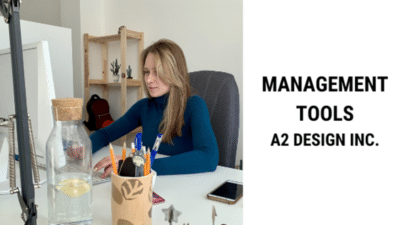8 Effective Ways to Reduce Software Development Costs

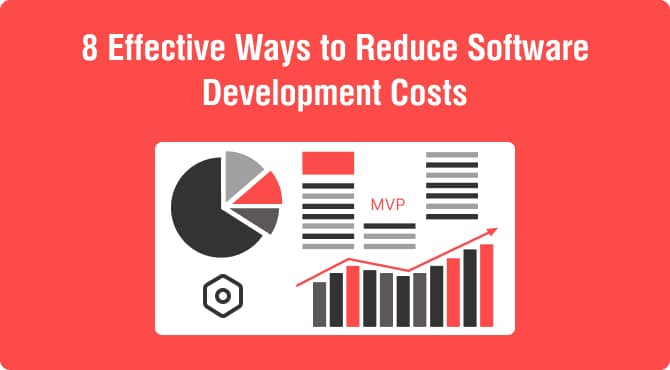
Building software is an investment, and sometimes it feels like a REALLY big investment. In today’s world, where amazing ideas seem to multiply faster than budgets do, cost-effective development strategies are more important than ever.
Software development itself is a complex beast. Projects can easily veer off course, miss deadlines, and balloon over budget before you know it. Even seasoned teams can get caught off guard by unexpected challenges and hidden costs.
But fear not! With careful planning and a little strategic thinking, you can absolutely control software development costs – maybe even reduce them significantly – without sacrificing the quality and functionality of your final product.
This article is your roadmap to navigating software development cost in a way that’s both efficient and budget-friendly, and you can expect the following:
- The Power of Clear Requirements: We’ll explore how clearly defined goals and well-documented requirements can prevent costly misunderstandings and rework down the line.
- The MVP Advantage: You’ll discover why building a Minimum Viable Product (MVP) first can save you time and money upfront while still allowing you to gather valuable user feedback.
- Building for the Future: We’ll cover strategies that not only keep your development costs under control during the initial project, but also help you minimize long-term expenses like maintenance and updates.
Without further ado, let us begin from the beginning: planning and preparation.
Planning and Preparation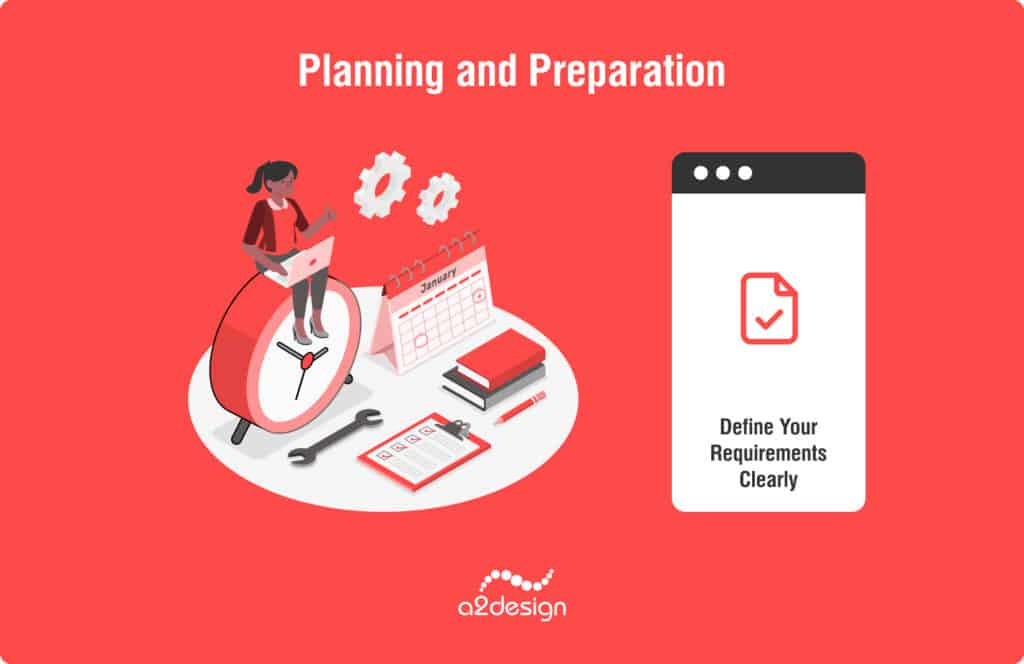
Think of a software project like building a house. You wouldn’t just hire a bunch of contractors and tell them to start hammering away, right? You need blueprints, detailed plans, and a clear understanding of what you want the final result to be. Software development works the same way, and a well-thought-out plan is the surest way to set yourself up for a project that stays on track and on budget.
Strategy 1: Define Your Requirements Clearly
Imagine if the blueprints for your dream house looked like a five-year-old’s scribble. Would the builders know how many bedrooms you want? Where to put the windows? What kind of roof?
Of course not. Miscommunications and vague ideas would lead to a costly, time-consuming disaster of a project. Software development is no different.
Detailed, precise requirements are your software project’s blueprint. Here’s why they’re crucial:
- Everyone on the Same Page: Clear requirements keep your developers, designers, testers, and even stakeholders all aligned on EXACTLY what the software needs to do and how it should function. This prevents misunderstandings that would have to be fixed later at a much higher cost.
- Fewer Scope Changes: “Scope creep” is how projects end up over budget and way behind schedule. Clear requirements minimize the chance that people will change their minds halfway through or suddenly add features the budget doesn’t account for.
- Smarter Planning: When you know what you’re building, you can accurately estimate costs, timelines, and what resources you’ll need.
How A2 Design Can Help
Defining software requirements the right way takes skill. It’s about more than just writing down ideas. A2 Design offers in-depth requirements gathering and analysis services. They’ll work closely with you to turn your vision into clear, actionable specifications that set your project up for success from the very start.
Strategy 2: Start with a Minimum Viable Product (MVP)
Imagine you’re opening a bakery. Instead of trying to launch with every kind of pastry imaginable, you focus on perfecting your absolute best cupcake recipe first. This lets you get it out there, see if people like it, and get valuable feedback way faster without spending a fortune to stock a giant display case. Think of an MVP as your software’s “perfect cupcake.”
Here’s why starting with an MVP makes sense:
- Get to Market Faster: MVPs concentrate development efforts on the absolute core features of your software. This means you can release a functional and valuable product in less time.
- Early Feedback is Gold: Users can try a simple version of your software early on, letting you collect feedback and fine-tune your direction before pouring resources into features nobody might even want.
- Lower Upfront Costs: Because MVPs are less complex, the development time and costs are significantly reduced. You test your idea in the market without breaking the bank.
How A2 Design Can Help
Building a great MVP is an art. It needs to be functional enough to provide real value, but lean enough to be built quickly and affordably. A2 Design are experts at understanding “minimum” without sacrificing “viable”. They can guide you through defining your MVP’s features and bring those critical features to life with efficiency, so you can maximize your budget and focus on delivering a fantastic user experience.
Read Related
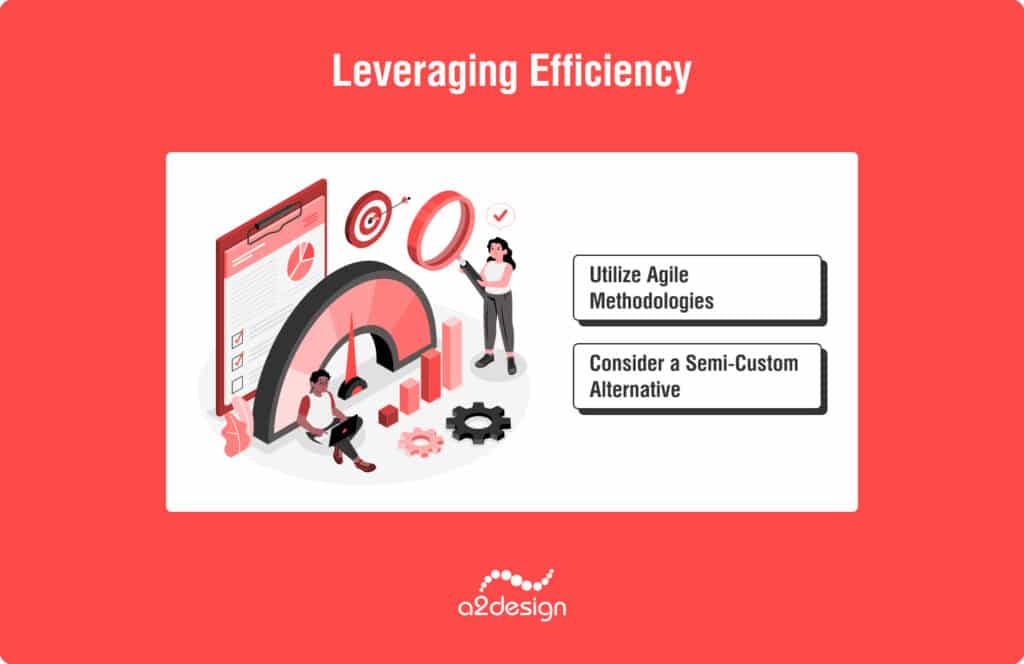
So now you’ve got your plan. You know exactly what you want to build, and you’ve even got a smart MVP approach to streamline the process. But the quest for cost-effective development doesn’t end there. This next section dives into strategies for making the development process itself as efficient as possible, keeping both costs and timelines under control.
Strategy 3: Consider a Semi-Custom Alternative
Think of your software project as building a car. You could literally start with raw metal and build every part yourself – the engine, the steering wheel, even the windshield. But it would take forever and be incredibly expensive. That’s why we have car parts manufacturers!
Software development works the same way. Why reinvent the wheel when robust, well-tested components and frameworks already exist?
Here’s what a semi-custom approach gets you:
- Head Start: Libraries, frameworks, and even pre-built UI components can take care of common tasks and functionality. This cuts down development time significantly.
- Tried and True: Open-source solutions and third-party components have been used in countless projects, meaning they’re often reliable and have good community support.
- Focus on What Matters: Instead of spending time on “basics” like user authentication or payment gateways, your team can focus on the truly unique and innovative features of your software.
How A2 Design Can Help
The trick is knowing what to build from scratch and what to integrate smartly. That’s where A2 Design’s experience comes in. They have a deep understanding of available technologies and can guide you towards the right mix of custom-built components and third-party solutions. This keeps projects agile and cost-effective, without sacrificing that tailor-made feel for your final product.
Strategy 4: Utilize Agile Methodologies
Imagine a traditional software project was like building a roller coaster in pitch darkness. You’d spend ages designing it, building it, and only at the very end would you turn on the lights and find out if it’s thrilling…or if it makes people throw up. That’s a huge risk and a waste of resources if it goes wrong!
Agile methodologies are like flicking on the work lights as you go. Instead of working in huge, blind phases, Agile breaks projects into smaller, iterative cycles. Here’s the magic:
- Test as You Go: Each cycle produces a piece of working software. User feedback and testing happen early, preventing the “throw-up roller coaster” scenario.
- Reduce Rework: If something isn’t working, you spot it quickly and can course-correct, avoiding major redesigns that would blow up your budget later on.
- Adapting is Key: Maybe user feedback reveals a new feature is more important than you realized. Agile lets you shift priorities without abandoning the whole project plan.
How A2 Design Can Help
Agile isn’t just a buzzword; it requires a shift in mindset and practice for everyone involved. A2 Design has a proven track record of successfully implementing Agile processes. They’re experts in guiding teams through this change, ensuring projects remain efficient, flexible, and focused on delivering a product that truly resonates with end users.
Strategic Cost-Saving Measures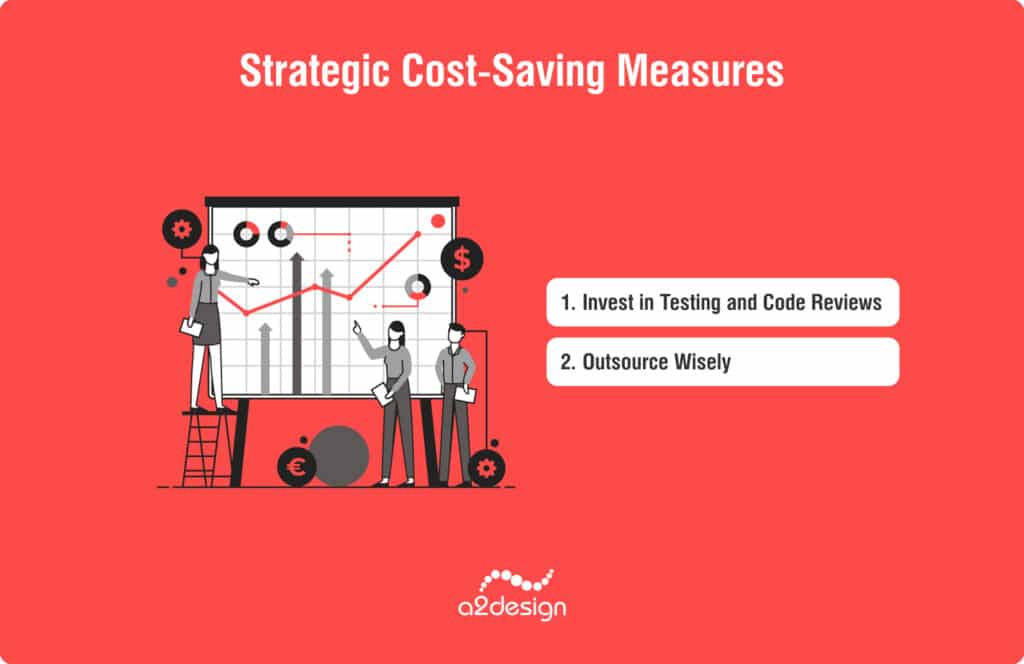
We’ve covered planning and efficiency. But what about some clever tactics you can use to directly target those software development budget lines? Think of this section as your special ops team, dropping in to take care of those pesky software development costs with quick, surgical strikes.
Strategy 5: Invest in Testing and Code Reviews
At first glance, spending extra on testing and code reviews seems counterintuitive when the goal is to save money. But think of it as an insurance policy for your software project.
Bugs and errors are an unfortunate reality of any development project. The catch? Fixing them gets exponentially more expensive the later they’re found. Here’s how it hurts your budget:
- Rework Rages On: If a bug makes it all the way into your deployed software, it could require major rewrites of code, which takes time and developer resources you’d rather spend on other things.
- Reputation Damage: Buggy releases frustrate users, lead to bad reviews, and make it harder to gain traction in the market. Fixing your reputation can cost way more than fixing a bug.
- Missed Opportunities: When your team is scrambling to squash bugs, they’re not focusing on adding new features or improvements that make your software even more appealing.
How A2 Design Can Help
Testing shouldn’t be an afterthought! A2 Design offers comprehensive testing and quality assurance services throughout the development lifecycle. From early stage test planning to in-depth code reviews, rigorous functional testing, and even user testing, they employ both manual and automated techniques to uncover and address issues before they become expensive problems. This translates to a more reliable final product and significant savings in the long run.
Strategy 6: Outsource Wisely
Outsourcing certain development tasks can be a great way to cut software development costs, but success absolutely hinges on choosing the right partners. Think of it like hiring extra crew members for your project ship. You want skilled, experienced people, not just anyone, to get the oars moving.
When done right, strategic outsourcing can help you:
- Access Specialized Skills: Maybe you need a UI/UX whiz for the frontend or a backend whiz-kid to optimize database stuff. Outsourcing specific tasks lets you tap into those skills without hiring full-time staff.
- Scale Up Quickly: Need to burst development capacity for a short time? A reliable outsourcing partner can let you temporarily expand your team as needed, then ramp back down when the push is over.
- Focus on Your Core Strengths: Delegate non-core tasks to a trusted partner, freeing up your in-house team to focus on what they do best and what drives the most value for your business.
Ready to Develop a Software Product?
Contact UsHow A2 Design Can Help
Outsourcing can be tricky—communication barriers, differing work styles, and quality control are all challenges. That’s where A2 Design can help. Their team has the expertise and experience to augment your in-house team seamlessly. They offer flexible engagement models tailored to your needs. Whether it’s specific tasks or larger portions of your project, A2 Design can integrate with your workflow to deliver quality results on time and within budget.
Long-Term Considerations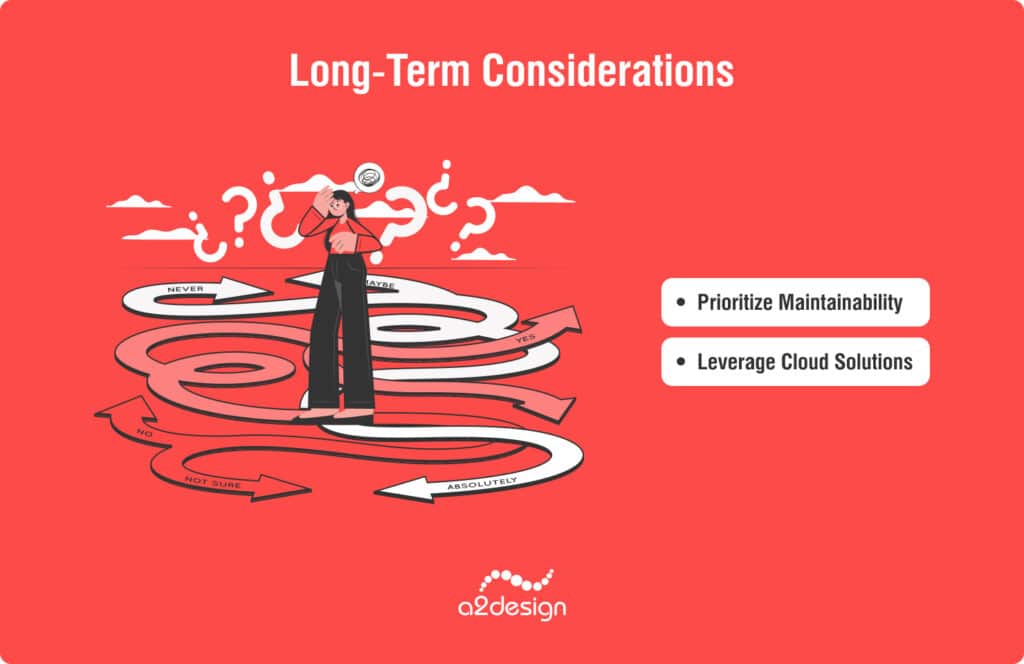
While effective cost containment during the initial development phase is critical, it’s equally important to adopt strategies that safeguard against escalating expenses throughout your software’s lifespan.
In this section, we’ll explore proactive measures designed to minimize ongoing maintenance, support, and update costs, ensuring the long-term financial sustainability of your software investment.
Strategy 7: Prioritize Maintainability
Think of your software like a house. Yes, building it cost-effectively is crucial, but what about long-term upkeep? A poorly constructed house will leak, creak, and need repairs constantly. Well-designed software with maintainability in mind ages much more gracefully.
Here’s how building for the long haul saves you money down the road:
- Easier Fixes: Clean, well-documented code means that developers (even new ones who join the project later) can understand how things work quickly. This makes bug fixes and updates faster and cheaper to implement.
- Agility is Key: Markets change, and your software needs to adapt. Maintainable code means those changes can be made quickly and efficiently without having to rebuild major components from scratch.
- Smoother Onboarding: It’s a fact of life that developers move on. Whether your own team changes or you bring in outside help later, well-structured code reduces the time and cost of getting new people up to speed on your software.
How A2 Design Can Help
Maintainability isn’t just about nice-looking code. A2 Design understands the importance of scalable architectures, thorough documentation, and adherence to coding standards. Their focus on maintainability from the outset translates into less time spent fixing things down the line, reduced reliance on specific developers, and the power to evolve your software efficiently. This allows you to focus on growth and innovation rather than getting bogged down in costly maintenance cycles.
Strategy 8: Leverage Cloud Solutions
Traditionally, setting up the infrastructure to host your software was a major upfront expense. You needed to buy servers, configure them…the whole 9 yards. The cloud changed the game, and smart businesses are taking advantage of its flexibility and cost-saving potential.
Here’s why the cloud makes sense for your budget:
- Pay-as-You-Go: Forget huge upfront costs for hardware you might not even use to capacity. Cloud services often have flexible payment models, letting you scale up or down based on demand.
- No More Maintenance Headaches: With cloud solutions, the provider takes care of hardware issues, system updates, and a lot of those nitty gritty infrastructure problems. This frees up your IT resources.
- Efficiency at Scale: Using managed cloud services can make specific tasks significantly cheaper. Instead of building your own email system or analytics platform, lean on the power of established cloud-based solutions.
How A2 Design Can Help
Migrating to the cloud and choosing the right cloud solutions is complex! There are tons of options and services out there, all with different pricing models. A2 design has in-depth experience in cloud architecture and a strong understanding of various cloud service offerings. They can guide you to a solution that aligns with both your technical requirements and your cost-efficiency goals, ensuring you reap the maximum benefits of the cloud.
ConclusionControlling software development costs isn’t about cutting corners – it’s about working smarter at every stage. Let’s recap the most powerful strategies we’ve covered:
- Planning is Power: A detailed blueprint (clear requirements and specifications) prevents costly miscommunications and rework throughout the project.
- Start Smart, Scale Fast: An MVP approach lets you get a streamlined version of your software into users’ hands quickly, gathering feedback and refining your direction without breaking the bank.
- Build for the Future: Prioritizing maintainability through clean code and good documentation means lower long-term support and update costs.
- Harness the Cloud: Leverage the flexibility and cost-saving potential of cloud-based infrastructure and services when they align with your software’s needs.
Ready to optimize your production budget?
A2 Design understands the delicate dance between building amazing software and staying cost-conscious. Visit our website and check out our development services. Discover how their team of experts can guide you toward a streamlined development process that delivers exceptional results without sacrificing your bottom line.

- SDaaS: What is Software Development as a Service? Comprehensive Guide
- Why Should You Use Agile Software Development Methodology?
- 10 Things to Know Before Building a C2C Marketplace
- 15 Proven Strategies to Attract Your First Marketplace Users
- 5 Steps to Get Your Business Online
- 6 Steps to start your eCommerce Marketplace
- 7 Easy Steps To Build Your Startup
- 7 Practical Tips to Build an MVP for a SaaS Startup
- 8 Effective Ways to Reduce Software Development Costs
- 9 Tips for Selecting Remote Offshore Web Development Company



